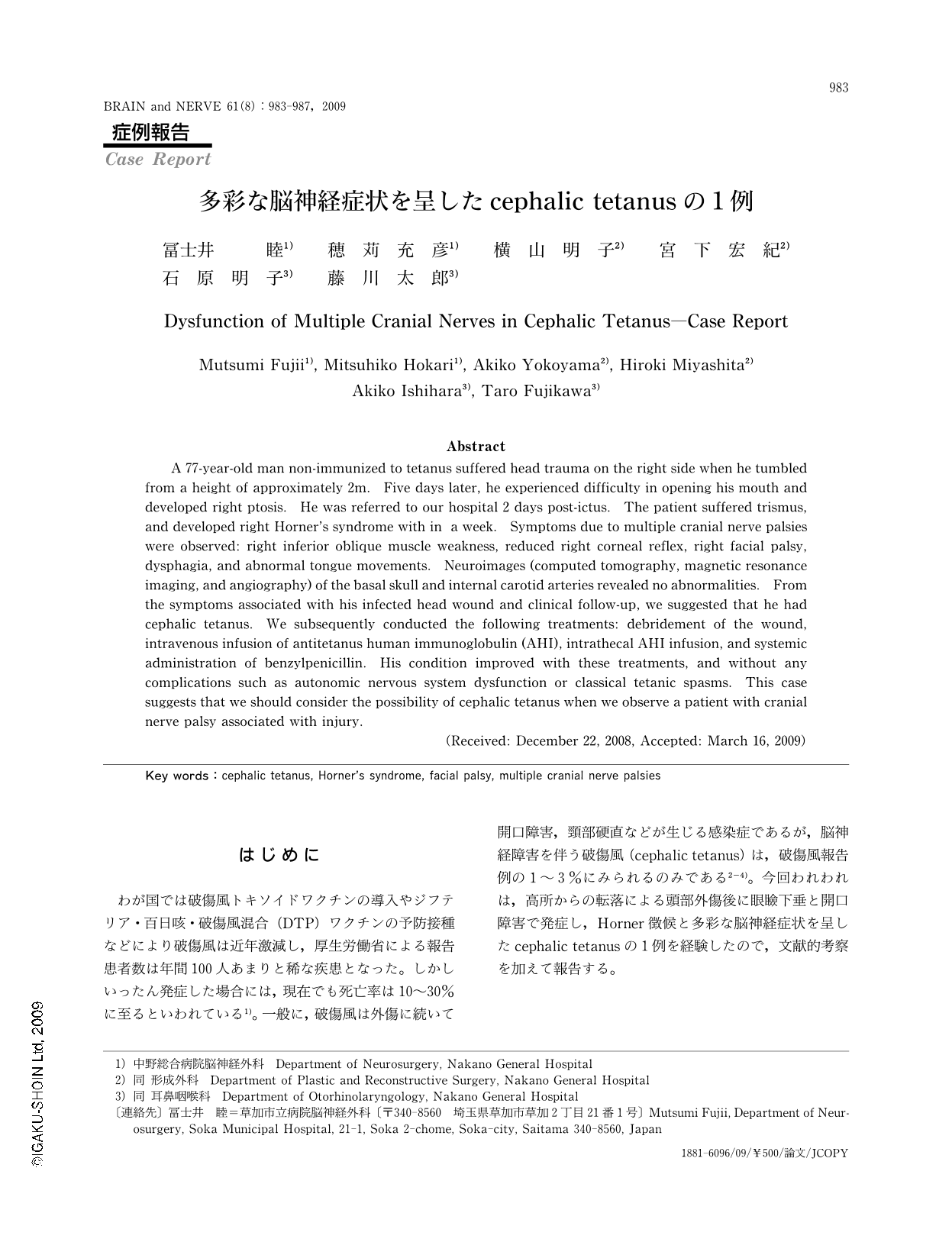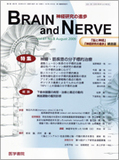Japanese
English
- 有料閲覧
- Abstract 文献概要
- 1ページ目 Look Inside
- 参考文献 Reference
はじめに
わが国では破傷風トキソイドワクチンの導入やジフテリア・百日咳・破傷風混合(DTP)ワクチンの予防接種などにより破傷風は近年激減し,厚生労働省による報告患者数は年間100人あまりと稀な疾患となった。しかしいったん発症した場合には,現在でも死亡率は10~30%に至るといわれている1)。一般に,破傷風は外傷に続いて開口障害,頸部硬直などが生じる感染症であるが,脳神経障害を伴う破傷風(cephalic tetanus)は,破傷風報告例の1~3%にみられるのみである2-4)。今回われわれは,高所からの転落による頭部外傷後に眼瞼下垂と開口障害で発症し,Horner徴候と多彩な脳神経症状を呈したcephalic tetanusの1例を経験したので,文献的考察を加えて報告する。
Abstract
A 77-year-old man non-immunized to tetanus suffered head trauma on the right side when he tumbled from a height of approximately 2m. Five days later, he experienced difficulty in opening his mouth and developed right ptosis. He was referred to our hospital 2 days post-ictus. The patient suffered trismus, and developed right Horner's syndrome with in a week. Symptoms due to multiple cranial nerve palsies were observed: right inferior oblique muscle weakness, reduced right corneal reflex, right facial palsy, dysphagia, and abnormal tongue movements. Neuroimages (computed tomography, magnetic resonance imaging, and angiography) of the basal skull and internal carotid arteries revealed no abnormalities. From the symptoms associated with his infected head wound and clinical follow-up, we suggested that he had cephalic tetanus. We subsequently conducted the following treatments: debridement of the wound, intravenous infusion of antitetanus human immunoglobulin (AHI), intrathecal AHI infusion, and systemic administration of benzylpenicillin. His condition improved with these treatments, and without any complications such as autonomic nervous system dysfunction or classical tetanic spasms. This case suggests that we should consider the possibility of cephalic tetanus when we observe a patient with cranial nerve palsy associated with injury.
(Received: December 22,2008,Accepted: March 16,2009)

Copyright © 2009, Igaku-Shoin Ltd. All rights reserved.


